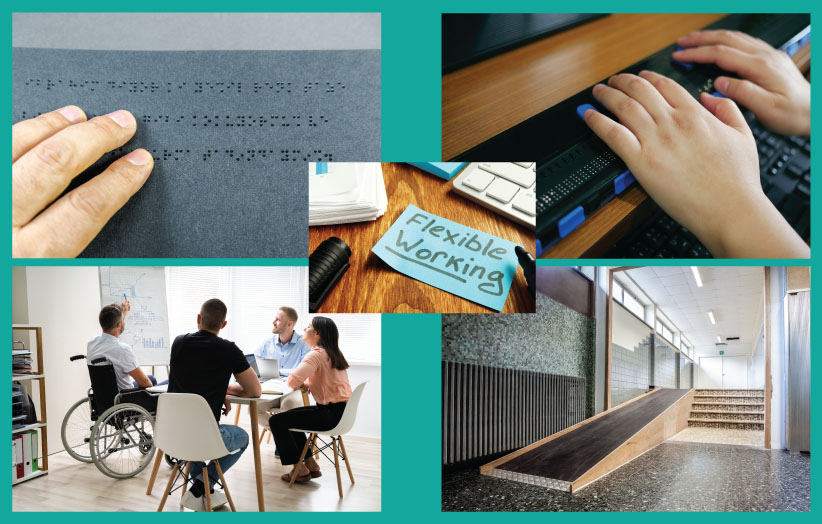
As an employer, it’s vital that you support all your employees. To create an inclusive workplace, you need to be paying particular attention to making the space accessible for minority groups, and ensuring those with disabilities are able to thrive in your work environment.
Some of the support systems you’ll need to put in place regarding disability in the workplace depend on the specifics of the individual, but there are also more general measures you can implement to ensure that everyone feels safe and welcome.
In this guide, we’ll look at how to promote disability in the workplace.
Support for Disabled Workers
Starting with Recruitment
True accessibility begins with the recruitment process. This might include application forms that are available in larger fonts, braille, or compatible with screen readers.
You should also apply this mindset to the interview process and the overall workspace, accommodating in-person, online and phone interviews where necessary or appropriate.
Accessibility
You should ensure that your workplace environment is fully accessible to everyone. Accessibility encompasses everything from physical implementations, like wheelchair access and assistive technology, to more general measures that everyone could benefit from, like a quiet room where employees can escape loud noise.
Provide Training
It’s important that all employees are aware of one another’s needs, and unconscious bias training can be useful in helping people recognise their differences.
Developing skills in the workplace should include this kind of communication so that nobody feels discriminated against or uncatered for.
Flexibility
Being flexible as an employer can make a world of difference to employees with a disability. For neurodiverse employees, for example, the ability to take breaks and work flexible hours can allow them to step away and let their minds reset. This not only helps them but helps you as an employer, as they will be more focused at work.
This flexibility also extends into other working arrangements. Are your employees able to work from home if they need to? Is it possible for them to travel to the office? If you’re meeting a client externally, is the place you’re planning to meet accessible for everyone attending?
Support Worker Learning Disabilities
As with other types of neurodiversity, you should make sure that you have features in place to help employees with learning disabilities. For example, providing training in multiple formats, allowing the use of helpful technology, and creating structured processes can help employees find a routine at work, and will likely help them to thrive in the workplace.
Consider the Individual
As mentioned above, some of the measures you’ll need to implement will depend on the individual and their personal requirements. For example, using easy-to-read fonts and providing technology like screen readers and speech-to-text could help employees with dyslexia, whereas clear deadlines and flexible working hours could be more beneficial to employees with ADHD.
Do your research to get an idea of what your employees need from you as an employer, but most importantly, talk to your team about what they need. Although there will be blanket traits for a lot of disabilities and neurodivergence that you can support as an employer, you’ll need to communicate with your employees to find out specifically what they need to feel supported.
Accessible Signage with Label Source
For a fully accessible workplace, this needs to be reflected in your workplace’s signage. This includes, for example, having a fire assembly point that is accessible for wheelchair users and signposted as such. You can also promote accessibility in the workplace by having your signage in braille.
At Label Source, we provide safety signs that make for a more accessible workplace. Start browsing today, or get in touch to find out more.